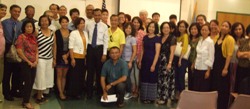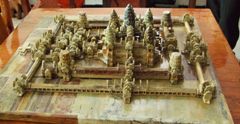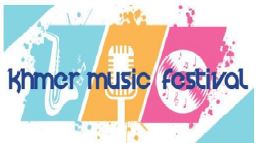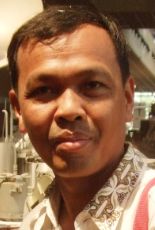Stung Treng Province
|
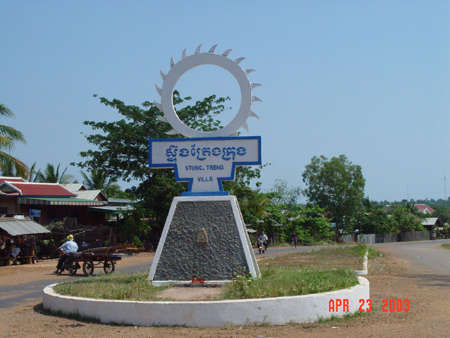 |
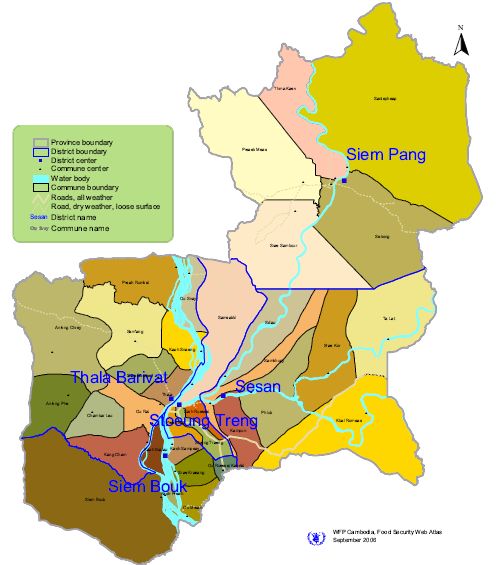
Stung Treng is a northern province of Cambodia. It was formerly called Xieng Teng and was once a part of the vast Khmer Empire, then the Lao kingdom of Lan Xang and later the Lao kingdom of Champassack. During the period of French Indochina it was again ceded to Cambodia.
The provincial capital is also named Stung Treng and is an important trade hub with a few hints of Lao influence scattered about, owing to the fact that the Lao border is about 50 km away. It 's a friendly, quiet country town situated on the confluence of the Sesan River, Sre Pok River, Sekong River (The 3S river) and the Mekong River. It actually sits on the banks of the Sesan River, with the mighty Mekong coming into the picture on the northeastern outskirts of he town.
The Sesan River is fronted in Stung Treng by a nice stretch of paved road. It 's the centre of socializing (as in most Cambodian river towns) in the late afternoon and early evening hours as the locals ride up and down the stretch enjoying the view and each other.
Geography
Drink and dessert stands spring up earlier to serve the daily merrymaking crowd. It 's a nice spot for a walk or jog any time of the day as the river road turns into a pleasant rural road that leads to the airport 4 km north of town. The river port area just in front of the small city park is fairly busy, handling trade between Cambodia and Laos. The ferry across the San River to where National Highway No 7 continues north to the Laos border is also at this pier. The fare is 300 riel per head. We went for a ride on this stretch (2,000 riel for taking a big bike on the ferry), but there is not much to see along the way besides light jungle and some remnants next to the road that was a target of carpet bombing during the Vietnam War years (the road was recently overhauled and is now one of the best in the country). The road works its way eastward so it does not afford views of the Mekong River as one would hope. The few residents we saw along the way were truly amazed to see the likes of us, who would want to be there.
Stung Treng province, which covers an area of 11,092 square kilometres, is a remote and sparsely populated province in the northeast of Cambodia. It borders Lao to the north, Ratanakiri to the east, Preah Vihear to the west and Kratie and Kompong Thom to the south. The province is divided into five district, 34 communes and 128 villages. Stung Treng is a unique province quite distinct from other Cambodian provinces in the Mekong basin. Extensive forests, intersecting rivers and streams and low population density characterize it. Stung Treng includes also the western chunk of the massive Virachey National Park, accessible from Siem Pang, a small beautiful town on the Tonle Kong. The province also features three big rivers the Tonle Kong, the Tonle San and the mighty Mekong with its hundreds of small islands scattered on the river stretch in Stung Treng Province.
Population
The population of Stung Treng constitutes just 0.7% of Cambodia's population. The population density is 7 people per square kilometre, which is nine times less than the national density. As the population is low and the province is endowed with natural resources, the immigration rate is very high. This fact has been proven by the population census in 1998, which shows that 19.4% of the province's population has migrated from outside, of which male migrants constitute 55%. The most commonly stated reasons for immigration were moving with family, followed by searching for livelihood.
Similar with other provinces, the female population is higher than the male population. The result of the census in 1998 demonstrates that 50.5% of the population is female. In Stung Treng, about 79.4% of the population are involved in the agriculture sector. The secondary and tertiary sectors account for 2.4% and 18.2% respectively. There are 54,488 male and 55,217 female with a total of 109,705 persons.
Economy
Stung Treng 's economy is based on fishing and silk weaving. However there is also some agricultural farming what is the smallest economical source of the province. Hopefully the ministry of tourism can manage its newly created development plan. The last river dolphins (Irrawaddy) in the Mekong River are at the heart of an ambitious development programme to tackle poverty and attract tens of thousands of visitors to the province. The Mekong River Discovery Trail Project will draw visitors to view the endangered fresh water dolphin, which lives in 10 deep-water natural pools in a 190-km stretch of the Mekong River, mostly between the quiet provincial capitals of Kratie and Stung Treng.
Tourist Attractions

Nowadays the dolphins live mainly in the rivers and waterways of Kratie and Stung Treng provinces. The number of these mammals is estimated to be between 40 and 60 and they are often seen travelling in small groups of 6 to 10 individuals. The females usually give birth to young once every two years most often during the months of June to August. The young dolphins are about 1m in length at birth and suckle milk. By adulthood the dolphins can attain a length of over 2.5m and weigh up to 180kg. Their diet consists mainly of small fish, shellfish and snails. The dolphins can swim at speeds up to 40km per hour and stay submerged for periods between five and ten minutes.
Hang Kho Ba Pagoda is the cultural and historical site, located at Hang Kho Ba Village, Hang Kho Commune, Steung Treng District in Six-Kilometer distance from the provincial town by the road to the airport, then turning left across the
river of Se Kong. The pagoda of Hang Kho Ba is over 300 years. Most of local people speak Khmer and Lao. The site is also very popular for sweet tamarind.
Kantuy Ko is one of the most visited sightseeing spots in Stung Treng. It is a place that serves as a sanctuary to plants and animal here. If you want to take the pleasure of fresh air and greenery then this is the place to visit. In fact that is
the reason why travelers love to come here year after year. In fact it is one of the most visited sightseeing spots in Stung Treng.You will find all kinds of animals here. The animals that are available here include many endangered species as well. You will find tigers and other mammals. There are various kinds of reptiles here too. As far as the plants are concerned, you will find a number of varieties of them here.
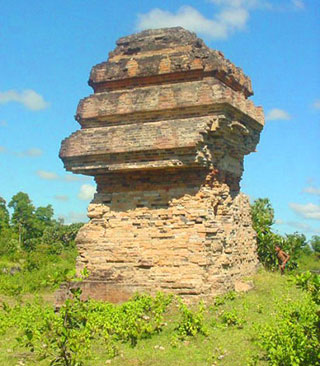
The Phnom Preah Theat, Stung Treng is one of the natural sanctuaries of Cambodia and happens to be one of the chief tourist attractions in Stung Treng. The Phnom Preah Theat, Stung Treng is situated in the quaint realms of the hamlet better known as Thmey. Tourists flock to the Phnom Preah Theat, Stung Treng to get a glimpse of the dense forests of the reserve as well as its unique and rare wildlife.
Preah Ko was the first temple to be built in the ancient and now defunct city of Hariharalaya (in the area that
today is called Roluos), some 15 kilometers south-east of the main group of temples at Angkor, Cambodia. The temple was built under the Khmer King Indravarman I in 879 to honor members of the king's family, whom it places in relation with the Hindu deity Shiva.
After the Khmer king Jayavarman II founded the Khmer empire in 802 A.D., he finally established his capital at Hariharalaya. Indravarman I was the nephew of Jayavarman II. When he ascended to the throne, he ordered the construction first of Preah Ko, which was dedicated in 879, and later of the temple-mountain known as the Bakong. It is likely that this building program was made possible by the king's peaceful reign and his ability to draw income from the expanding empire. A restoration of the towers took place in early 1990s, financed by German government.Preah Ko consists of six brick towers arranged in two rows of three towers each perched on a sandstone platform. The towers face east, and the front central tower is the tallest. The sanctuaries are dedicated to three divinized forefathers of Indravarman and their respective wives. The front central tower is dedicated to Jayavarman II, the founder of the Khmer empire.[1] The tower to the left is dedicated to Prithivindreshvara, King Indravarman's father; the tower to the right to Rudreshvara, his grandfather. The three rear towers are dedicated to the wives of these three men.The central towers all bear images of the Hindu god Shiva.
Preah Ko, which means 'the sacred bull' (Shiva's vehicle Nandi), was built by Indravarman I in 879. It is part of the Roluos group of monuments about 13 kilometers east of Siem Riep. The temple is distinguished from others in the area by the unusual arrangement of its six central towers, which stand in two rows facing east.
The three towers on the east side are staggered so that the central tower is slightly further to the west. This tower is dedicated to Shiva, the Hindu god closely associated with the rule of Jayavarman II, the founder of the Khmer Empire. The tower to the north was dedicated to the founder of Preah Ko, and the tower to the south was dedicated to the King's father. Each of these shrines once contained a statue, but they were removed at some time in the past.
The Mekong River between Stung Treng and the Laos border is very light on population and heavy on beautiful scenery. Boulder outcroppings, numerous sets of rapids, swirling pothole currents, wide sweeping stretches of river and forested landscape along the banks all await the boat traveler. It makes for a great trip, either for the traveler that wants to continue on to Laos or for those wanting to enjoy a wild stretch of the Mekong in Cambodia.
The trip is difficult to downright impossible to make on this shallow stretch of the Mekong during the dry season, with cont less sunken islands and a virtual forest of trees growing right in the middle of the river. The trip becomes an obstacle course for the boat drivers this time of the year, as they carefully try to choose the best way to guide their craft through the maze that nature has created without losing a propeller to the river. The best time of the year to take this trip is
from May to November when sufficient upstream rains have raised the river to a level that allows the boats to pass through carefully.
Discover Province of Stung Treng is researched by Lowell Cole and Boran Tum.

